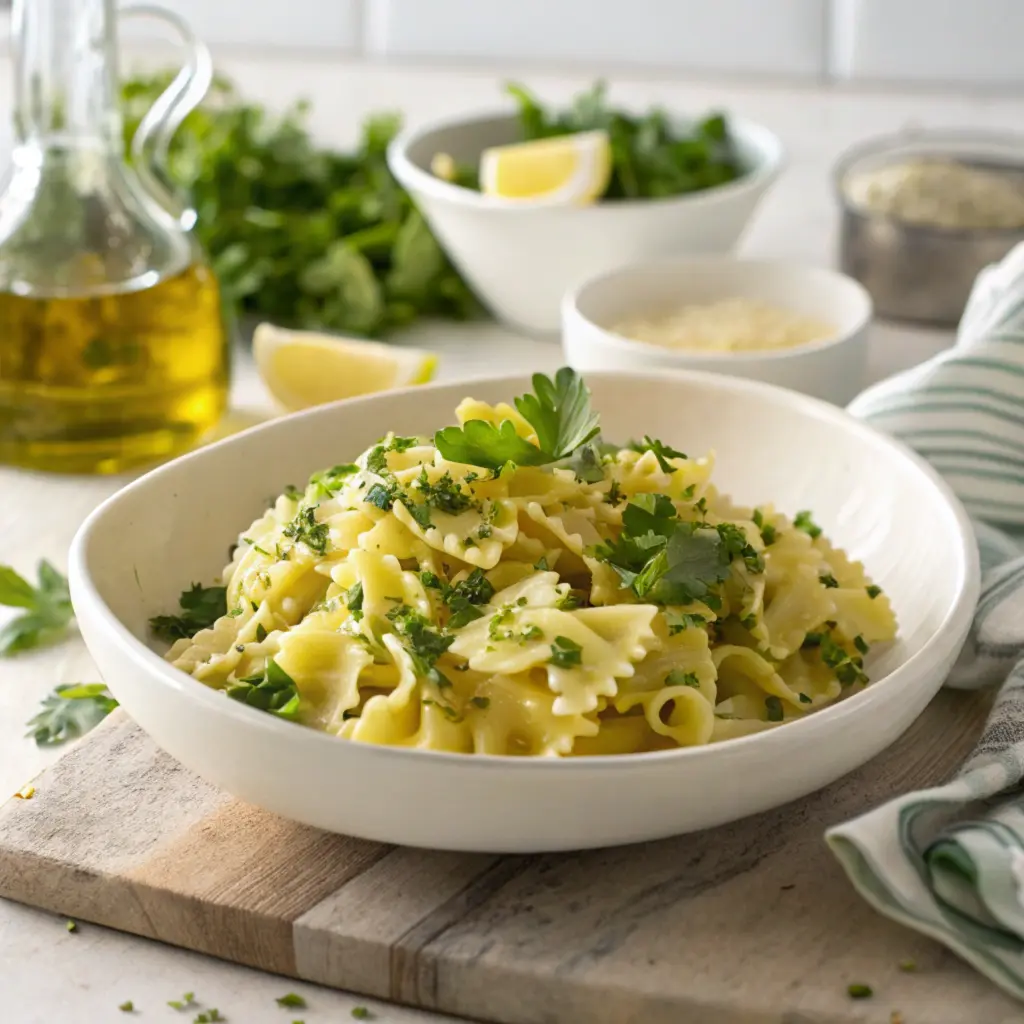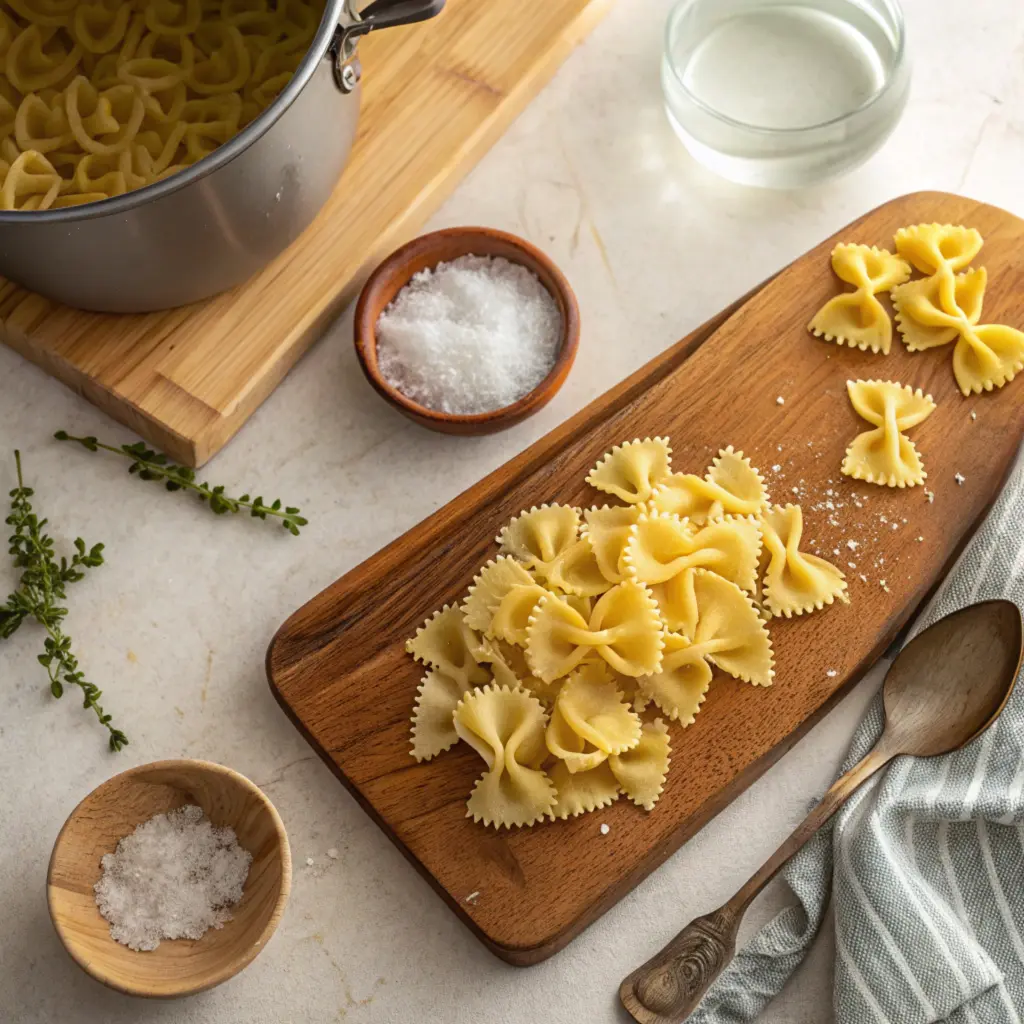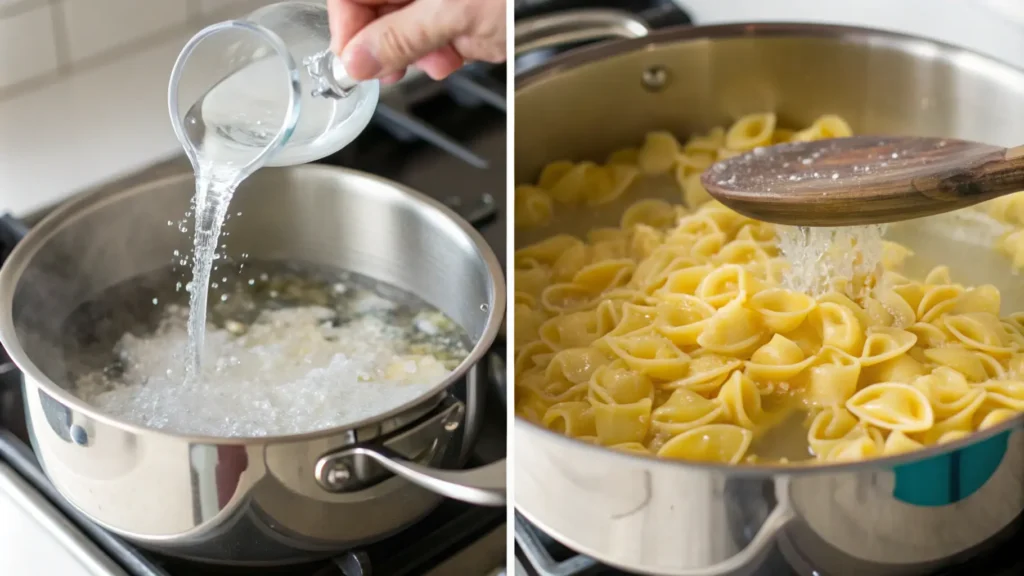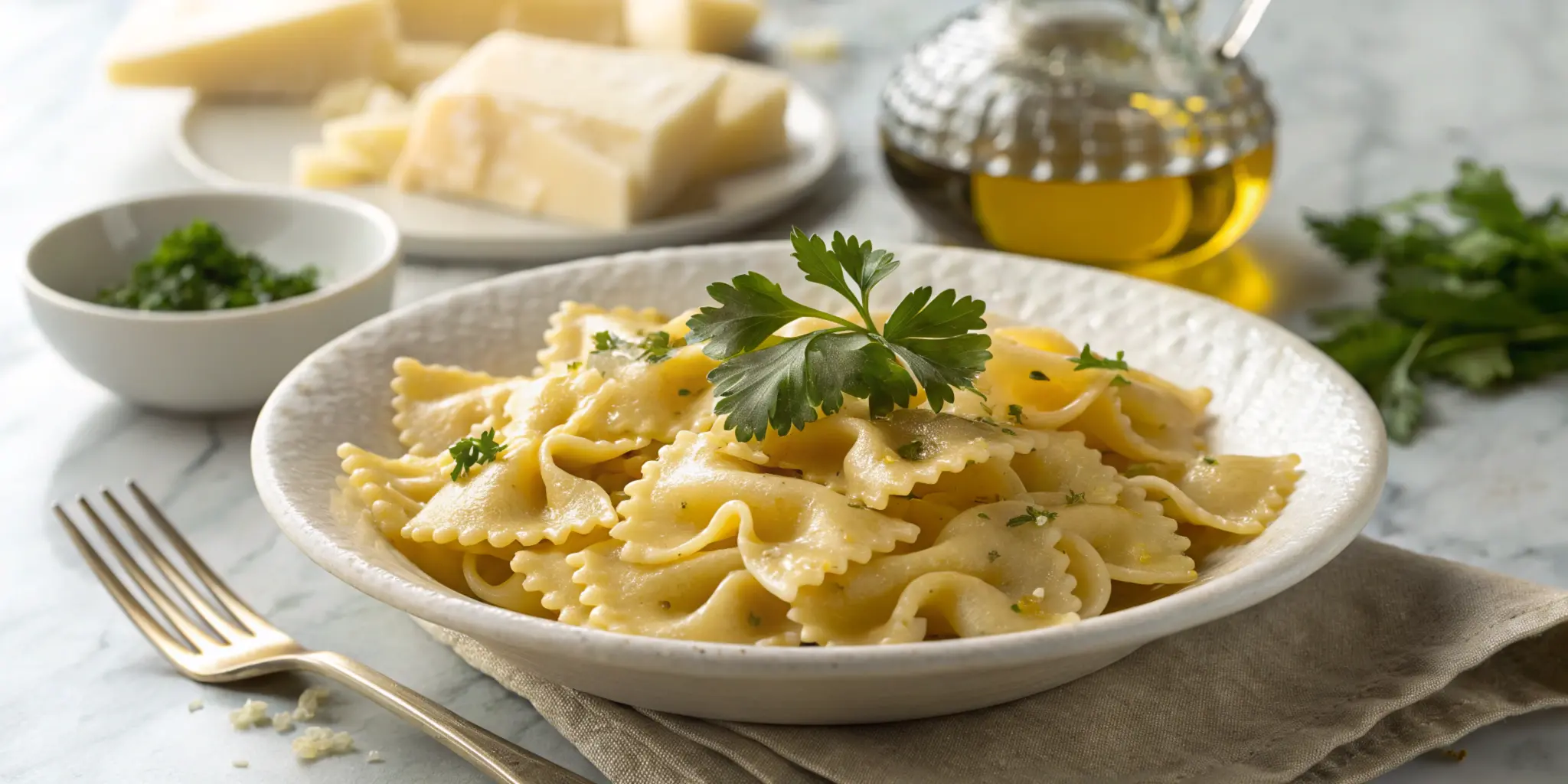Cooking fresh campanelle pasta is an art that involves understanding its unique texture, cooking methods, and the importance of getting the timing just right. From boiling water to achieving the perfect al dente consistency, every step plays a vital role in creating a delicious dish. This guide will walk you through each phase, offering practical tips and answering common questions about preparing this delightful pasta. Let’s dive into the process, starting with an overview of its origins and culinary significance.
For a full guide to campanelle pasta, including its history, popular recipes, and expert cooking tips, check out our complete guide here: Campanelle Pasta: A Complete Guide to History, Recipes, and Cooking Tips.
What is Campanelle Pasta?
Campanelle pasta, often referred to as bellflower pasta, is a unique type of pasta shaped like a small cone with ruffled edges. This shape is designed to hold sauces beautifully, making it a favorite for creamy or chunky sauces alike.
Origin and Description
Originally from Italy, campanelle pasta has a distinctive bell-shaped design that not only adds to its aesthetic appeal but also improves its functionality in capturing sauce. Unlike other pasta shapes, its folds and ridges make it ideal for hearty dishes.
Common Culinary Uses
Campanelle pasta is versatile in the kitchen. It pairs well with rich sauces, such as Alfredo or marinara, but also shines in lighter dishes, like pasta salads or simple olive oil and garlic preparations. Because of its structure, it’s equally delicious in casseroles or baked recipes.

Importance of Proper Cooking Time
Timing is everything when it comes to cooking pasta, especially with fresh varieties like campanelle. Undercooking or overcooking can drastically affect the texture, taste, and overall appeal of your dish.
Achieving Al Dente Texture
Fresh campanelle pasta, unlike its dried counterpart, cooks faster. To achieve the ideal al dente texture—firm but tender—you need to keep an eye on the cooking process. The pasta should have a slight bite but still be easy to chew.
Impact on Flavor and Sauce Absorption
The right cooking time ensures that the pasta absorbs sauces effectively. If overcooked, the pasta becomes mushy and loses its ability to hold the flavors, diminishing the overall taste of your meal.
Essential Preparations Before Cooking
Cooking fresh campanelle pasta successfully begins with careful preparation. From choosing the right ingredients to preparing the cooking environment, each detail contributes to a tasty result. Before boiling water or measuring salt, these essential steps set the stage for pasta perfection.

Selecting Quality Fresh Campanelle Pasta
The foundation of any great pasta dish lies in the quality of the pasta itself. Fresh campanelle pasta can be found at artisanal shops or specialty grocery stores, and choosing the right one makes all the difference.
When shopping, look for pasta with a uniform shape and a slightly pliable texture—hallmarks of freshness. High-quality pasta often uses semolina flour, which gives it a subtle nutty flavor and firm texture. Check the label for minimal ingredients; fresh pasta should contain flour, eggs, and little else.
If possible, support local producers for a fresher, more authentic product. Keep the pasta refrigerated until ready to cook, as it has a shorter shelf life compared to dried pasta. Whether homemade or store-bought, starting with top-notch campanelle ensures your dish will impress.
Importance of Using Ample Water
Using enough water is a crucial, yet often overlooked, step when cooking pasta. A generous amount of water—at least 4–6 quarts per pound of pasta—allows the campanelle to cook evenly without clumping together.
When the pasta has space to move freely in the pot, it cooks uniformly, avoiding undercooked or overcooked sections. Water also acts as a buffer, diluting the starch released by fresh pasta. This prevents the water from turning overly thick and sticky, which can affect the final texture.
For best results, use a large, heavy-bottomed pot to maintain a steady boil. If you’re in doubt, err on the side of more water. Starting with enough water ensures a smooth cooking process from start to finish.
Salting the Water Correctly
Salt is the secret to flavorful pasta, but finding the right balance is key. The common phrase “salty like the sea” is a good rule of thumb, though fresh pasta requires slightly less salt than dried.
Add salt after the water has reached a boil—about 1–2 tablespoons for every gallon of water. This timing helps the salt dissolve evenly without slowing the boiling process. Avoid using iodized salt, which can impart an artificial taste; opt for kosher salt or sea salt instead.
Properly salted water enhances the flavor of the campanelle without overpowering it. Since fresh pasta absorbs flavors more readily than dried, this step is especially important for achieving a balanced taste.
Step-by-Step Cooking Guide
Cooking fresh campanelle pasta is a straightforward process, but each step has a purpose. Follow this guide to ensure your pasta is cooked evenly, with the perfect texture to complement any sauce.

Bringing Water to a Rolling Boil
The first step is to bring your water to a rolling boil. This means the water should be bubbling vigorously and consistently across the surface, not just a few small bubbles rising occasionally. Why is this important? A rolling boil helps the pasta cook quickly and evenly, as the temperature remains constant throughout the cooking process.
Start by filling a large pot with enough water—remember the rule of 4–6 quarts per pound of pasta. Place the pot on high heat and cover it with a lid to speed up the boiling process. Once the water is boiling, remove the lid to prevent overflow.
Avoid adding pasta to lukewarm or simmering water; this will result in uneven cooking and a sticky texture. Boiling water creates a perfect environment for fresh campanelle to cook to al dente perfection.
Adding Pasta and Stirring
Once the water is at a full boil, it’s time to add your fresh campanelle pasta. Gently place the pasta into the pot, ensuring it’s fully submerged. Immediately after adding it, give the water a good stir. This prevents the pasta from clumping together or sticking to the bottom of the pot.
Use a long-handled wooden spoon or a pasta fork to stir. Repeat this process occasionally throughout the cooking time. Fresh pasta releases more starch than dried, so regular stirring ensures the water stays fluid and the pasta cooks evenly.
Keep an eye on the clock, as fresh pasta cooks faster—typically in 2 to 4 minutes. Taste-test a piece during the process to check for the perfect al dente texture. Proper stirring and attention during cooking can make all the difference in the final dish.
Monitoring Cooking Time
Timing is critical when preparing fresh campanelle pasta, as it cooks faster than dried pasta. Fresh pasta typically requires only 2 to 4 minutes to achieve the perfect al dente texture.
For more precise guidance and cooking times for various pasta types, refer to this comprehensive pasta cooking guide. This resource provides detailed instructions to help ensure consistent results.
As a general rule, fresh campanelle pasta should cook for about 2 to 4 minutes. However, this can vary slightly depending on the thickness of the pasta and the specific brand or recipe. Always refer to the packaging instructions for guidance, but remember that your own taste test is the ultimate judge.
| Step | Action | Time/Details |
|---|---|---|
| Bring Water to a Boil | Fill a large pot with 4–6 quarts of water and bring to a rolling boil. | ~8–10 minutes (for boiling) |
| Salt the Water | Add 1–2 tablespoons of salt per gallon of water after it starts boiling. | Immediately after boiling |
| Add Fresh Campanelle Pasta | Gently place pasta in boiling water and stir to prevent sticking. | 2–4 minutes cooking time |
| Test for Al Dente Texture | Taste a piece for firmness and slight resistance in the center. | Begin testing after 2 minutes. |
| Drain Without Rinsing | Use a colander or slotted spoon, reserving ½ cup of pasta water if needed. | Immediately after cooking. |
| Toss with Sauce | Add pasta to your prepared sauce and toss to coat evenly. | Serve immediately. |
Recommended Cooking Duration
For fresh campanelle pasta, the recommended cooking time is typically between 2 and 4 minutes. The exact duration may depend on whether the pasta is homemade or store-bought, as well as its size and shape. It’s better to start testing the pasta a bit earlier rather than risk overcooking it. Overcooked pasta becomes mushy, losing the delightful texture that fresh pasta is known for.
To stay on top of the timing, set a timer as soon as the pasta hits the boiling water. This ensures you’re not distracted and allows you to focus on achieving perfectly cooked campanelle every time.
Testing for Doneness
Testing for doneness is the most reliable way to ensure your pasta is cooked just right. Use a slotted spoon to retrieve a single piece from the pot. Let it cool slightly, then take a bite. The pasta should feel tender with a slight firmness at the center—this is what Italians call al dente.
If the pasta is too firm, give it another 30 seconds and test again. Keep in mind that fresh pasta cooks quickly, so it’s better to test frequently than to leave it unattended. Once the desired texture is achieved, promptly remove the pasta from the boiling water to prevent overcooking.
Draining and Serving Fresh Campanelle Pasta
Once your fresh campanelle pasta is perfectly cooked, it’s time to drain and serve it. These steps are crucial to maintaining its texture and flavor while preparing it for the final presentation. Proper handling during this stage ensures your pasta is the star of the dish.
Proper Draining Techniques
Draining fresh campanelle pasta might seem straightforward, but a few nuances can make a big difference in the final result. Use a colander placed in the sink to drain the pasta, but don’t rinse it with water—this washes away the starch that helps sauces cling to the pasta.
For a more controlled process, use a slotted spoon or pasta fork to transfer the pasta directly from the pot to the serving dish or sauce pan. This method keeps some of the starchy water on the pasta, which can enhance the texture and flavor of the dish.
Don’t forget to reserve a cup of pasta water before draining. This versatile liquid is rich in starch and can be added to sauces to adjust their consistency or flavor. With the right draining techniques, your pasta remains flavorful and ready to pair with the sauce.
Combining with Sauce
Fresh campanelle pasta is at its best when paired with a sauce immediately after draining. By combining the pasta and sauce while the pasta is still hot, the flavors meld together beautifully.
For a smooth process, heat the sauce in a large pan while the pasta cooks. Once the pasta is drained, transfer it to the pan with the sauce. Toss gently to ensure the pasta is evenly coated. If the sauce seems too thick, add a splash of the reserved pasta water to achieve the desired consistency.
The ridges and folds of campanelle are perfect for holding sauce, whether it’s a hearty marinara, a creamy Alfredo, or a simple olive oil and garlic mixture. Serve the pasta immediately for the best taste and texture, and enjoy the fruits of your culinary effort!
Tips for Perfectly Cooked Fresh Campanelle Pasta
Achieving the perfect texture and flavor with fresh campanelle pasta isn’t difficult, but attention to detail can elevate your dish. These simple tips will help you avoid common pitfalls and make the most of your cooking efforts.
Avoiding Overcooking
Fresh campanelle pasta cooks much faster than dried varieties, which makes overcooking a common issue. To prevent this, start by setting a timer as soon as the pasta hits the boiling water. Always aim to check for doneness about 30 seconds before the shortest recommended cooking time on the package.
Taste-testing frequently is your best ally in avoiding mushy pasta. Remove the pasta from the pot as soon as it’s al dente, even if it’s just a hair underdone—remember, it will continue to cook slightly when mixed with hot sauce.
Quick action is key. Have your colander ready, your sauce heated, and your serving dishes prepared before you start cooking. By staying on top of the process, you can avoid the soggy, sticky texture that comes with overcooking.
Utilizing Pasta Water in Sauces
One of the best-kept secrets in Italian cooking is the use of pasta water to enhance sauces. The water left behind after boiling fresh campanelle pasta is rich in starch, making it an excellent thickening and binding agent.
To use this magic ingredient, reserve a cup of pasta water before draining. Add it gradually to your sauce while tossing the pasta to achieve the desired consistency. The starch in the water helps the sauce cling to the pasta, ensuring every bite is full of flavor.
This technique works wonders with creamy sauces, tomato-based sauces, or even simple oil-based dressings. It also helps balance overly thick sauces, creating a silky, restaurant-quality finish.
Importance of Immediate Serving
Fresh campanelle pasta is at its best when served immediately after cooking. Unlike dried pasta, fresh varieties cool quickly and can lose their appealing texture if left to sit too long.
Serve the pasta hot, right after tossing it with the sauce. If you’re making a large batch, consider preparing individual portions to maintain the ideal temperature and texture. Delaying serving not only risks overcooked pasta but also causes the sauce to separate or dry out.
For the freshest taste, ensure the entire cooking and serving process flows seamlessly. Your guests—or your taste buds—will thank you for the care and effort you put into creating a perfectly cooked pasta dish!
Pitfalls in Cooking Fresh Campanelle Pasta
How long to cook fresh campanelle pasta is a key factor to keep in mind, but knowing the common mistakes to avoid is just as important. Cooking fresh campanelle pasta might seem straightforward, but several errors can lead to disappointing results. From improper water usage to neglecting stirring techniques, avoiding these pitfalls ensures a dish that’s flavorful, perfectly textured, and satisfying.
Insufficient Water Usage During Campanelle Pasta Cooking Time
One of the most frequent mistakes when determining how long to cook fresh campanelle pasta is not using enough water. Fresh pasta, including campanelle, releases more starch than dried pasta, which can thicken the water quickly. If the pot is too small or lacks sufficient water, the pasta may stick together, cook unevenly, or become gummy.
To avoid this issue, always use a large pot with 4–6 quarts of water per pound of pasta. This allows the pasta to move freely, ensuring even cooking. Additionally, generous water dilutes the starch, preventing it from forming a sticky coating. Following this pasta boiling guide helps ensure a smooth cooking process and delicious results.
Neglecting to Stir Fresh Campanelle Pasta
Another pitfall in cooking fresh campanelle pasta is neglecting to stir it properly. Fresh pasta is delicate and, if left unattended, can clump together, particularly during the first minute of cooking.
When the campanelle pasta is added to the boiling water, stir it immediately to ensure each piece is fully submerged and moves freely. Use a long-handled spoon or pasta fork to stir gently, repeating this action occasionally. Regular stirring not only prevents sticking but also ensures the pasta cooks evenly, helping you master how long to cook fresh campanelle pasta perfectly.
Incorrect Salt Proportions in the Pasta Boiling Guide
Salting the pasta water is essential for enhancing its flavor, but incorrect proportions can negatively affect the dish. Using too little salt results in bland pasta, while too much can overwhelm the delicate taste of fresh campanelle.
To achieve the ideal seasoning, use 1–2 tablespoons of salt per gallon of water. Add the salt only after the water reaches a rolling boil—this ensures even distribution and prevents potential damage to your cookware. Properly salted water enhances the pasta’s natural flavor and improves the sauce absorption, creating a balanced and delicious meal.
By learning how long to cook fresh campanelle pasta and avoiding these pitfalls, you’ll consistently prepare flavorful and perfectly cooked pasta every time.
Frequently Asked Questions
How long should I cook fresh campanelle pasta?
Fresh campanelle pasta typically cooks in 2 to 4 minutes, depending on its thickness and the specific brand or recipe. Unlike dried pasta, which requires a longer cooking time, fresh pasta is tender and reaches al dente much faster. To ensure you don’t overcook it, set a timer and start testing for doneness around the 2-minute mark. The pasta should have a slight firmness when bitten but still be easy to chew. Always refer to the package instructions for precise timing if available.
How can I tell when the pasta is al dente?
To check if campanelle pasta is al dente, use a slotted spoon to remove a single piece from the pot. Let it cool briefly and take a bite. The pasta should feel tender but with a slight resistance or firmness in the center. This texture is perfect for holding sauces and providing a pleasant chew. If the pasta feels too soft, it’s overcooked; if it’s overly firm, let it cook for another 30 seconds and test again. Frequent tasting is the best way to achieve the ideal texture.
Should I add oil to the pasta water?
No, adding oil to the pasta water is unnecessary and can even be counterproductive. While some believe oil prevents pasta from sticking, it can create a slippery coating on the pasta, making it difficult for sauces to adhere properly. Instead, ensure you use plenty of water and stir the pasta frequently during cooking to prevent sticking. For fresh campanelle pasta, its natural starch works well with sauces, so skipping the oil allows for better flavor absorption and a more cohesive dish.
What is a good substitute for campanelle pasta?
If you can’t find campanelle pasta, several substitutes work well depending on your recipe. Farfalle (bow-tie pasta) and fusilli are great options due to their ability to hold sauces in their folds or ridges. Cavatappi or penne can also substitute, especially in baked dishes or salads. While these alternatives don’t replicate the unique bell-like shape of campanelle, they’re versatile and complement similar sauces and preparations.
If you’re out of campanelle pasta and need a quick alternative, discover the 10 best substitutes for campanelle pasta in our comprehensive guide: 10 Best Substitutes for Campanelle Pasta.
How to cook campanelle pasta?
Cooking campanelle pasta is simple. For fresh pasta, bring a large pot of water to a rolling boil and add 1–2 tablespoons of salt per gallon. Once boiling, add the campanelle and stir immediately to prevent sticking. Cook for 2–4 minutes for fresh pasta or according to package instructions for dried. Test for al dente texture before draining and immediately toss with your favorite sauce for best results.
What is campanelle pasta?
Campanelle pasta, also known as “bellflower” pasta, is a distinctive Italian pasta shaped like small cones with ruffled edges. Its unique design makes it ideal for holding sauces, whether creamy, chunky, or oil-based. Originally from Italy, campanelle is commonly used in hearty dishes or pasta salads. Its elegant appearance and versatile texture make it a favorite among pasta lovers.
To learn more about campanelle pasta, including its history, culinary uses, and expert tips, check out our comprehensive guide here: What Is Campanelle Pasta? History, Uses, and Tips.
What is the difference between gigli and campanelle?
Gigli and campanelle pasta are often confused due to their similar shapes, but they have subtle differences. Gigli, which means “lilies” in Italian, features a flower-like design with slightly narrower, flared edges. Campanelle, meaning “little bell,” has a broader cone-like shape with pronounced ruffles. Both work well with sauces, but gigli is often slightly smaller and more decorative, while campanelle’s folds are better for capturing thicker sauces.
If you’re curious about the differences between gigli and campanelle pasta, including their unique uses and best cooking tips, explore our in-depth comparison here: Gigli vs. Campanelle: Key Differences, Uses, and Tips.
Mastering the Art of Cooking Fresh Campanelle Pasta
How long to cook fresh campanelle pasta is a question many pasta enthusiasts ask, and mastering the answer is key to creating a perfect dish. Cooking fresh campanelle pasta is an art that requires timing, technique, and attention to detail. This unique pasta, with its bell-shaped design and ruffled edges, excels at holding sauces and creating visually stunning dishes. Understanding how to manage the cooking process ensures you achieve a dish that’s both flavorful and satisfying.
The journey begins with quality ingredients and proper preparation. Knowing how long to cook fresh campanelle pasta helps you achieve the ideal texture, while using ample water, salting it correctly, and stirring regularly prevents sticking. Fresh campanelle pasta cooks quickly—usually in 2 to 4 minutes—and requires careful monitoring to achieve the perfect al dente texture. This ensures the pasta remains firm while beautifully absorbing flavors.
Once you’ve learned how long to cook fresh campanelle pasta, proper handling after cooking is equally important. Draining the pasta without rinsing it preserves its starch, which is essential for sauce adhesion. Tossing the pasta with your sauce while it’s hot, along with a splash of reserved pasta water, creates a cohesive, flavorful dish. Serve it immediately for the best taste and texture, turning a simple meal into a culinary triumph.
With these steps, you can confidently answer how long to cook fresh campanelle pasta and prepare it perfectly every time. Whether it’s for a casual family dinner or a special occasion, getting the cooking time right ensures this elegant pasta transforms into a memorable meal everyone will love.

